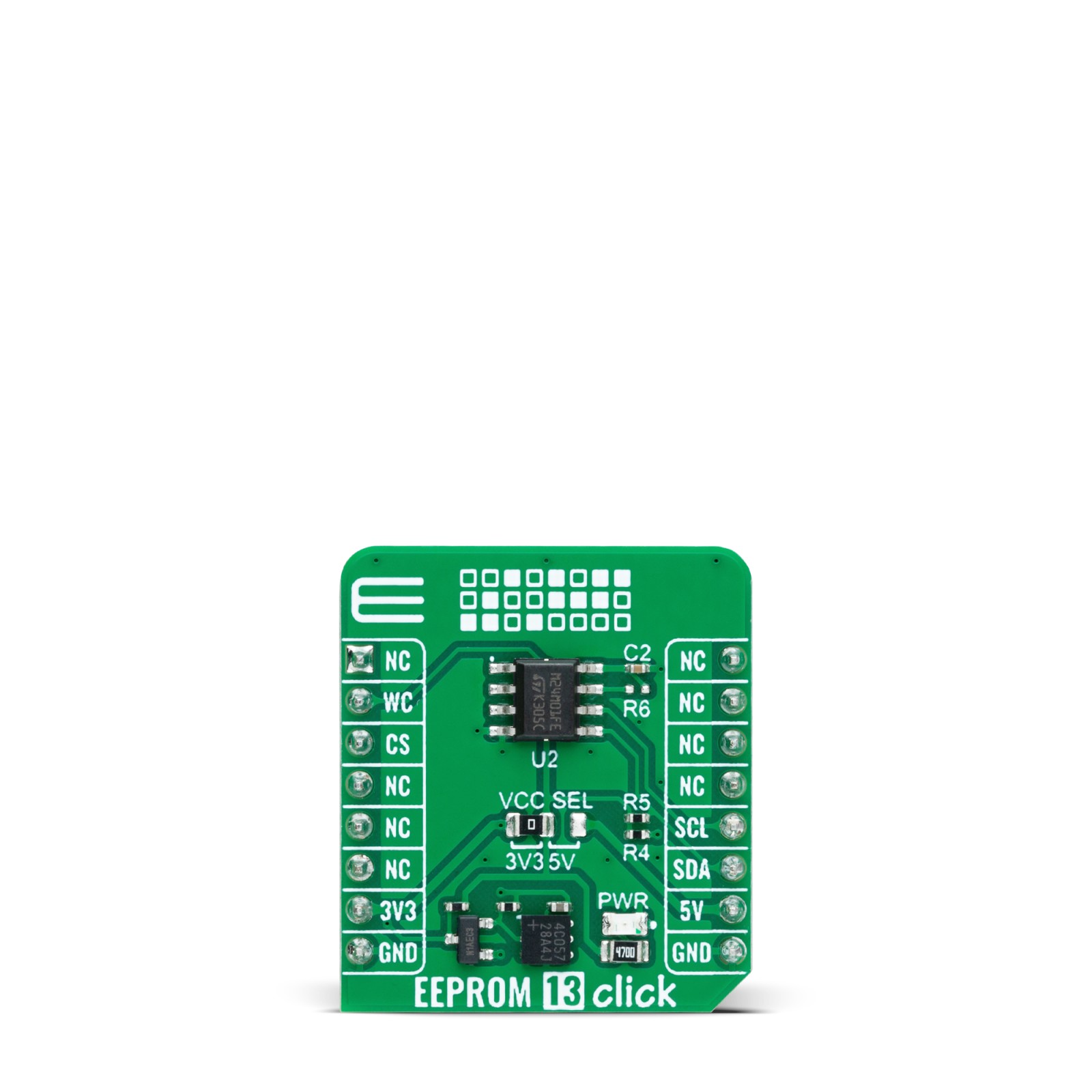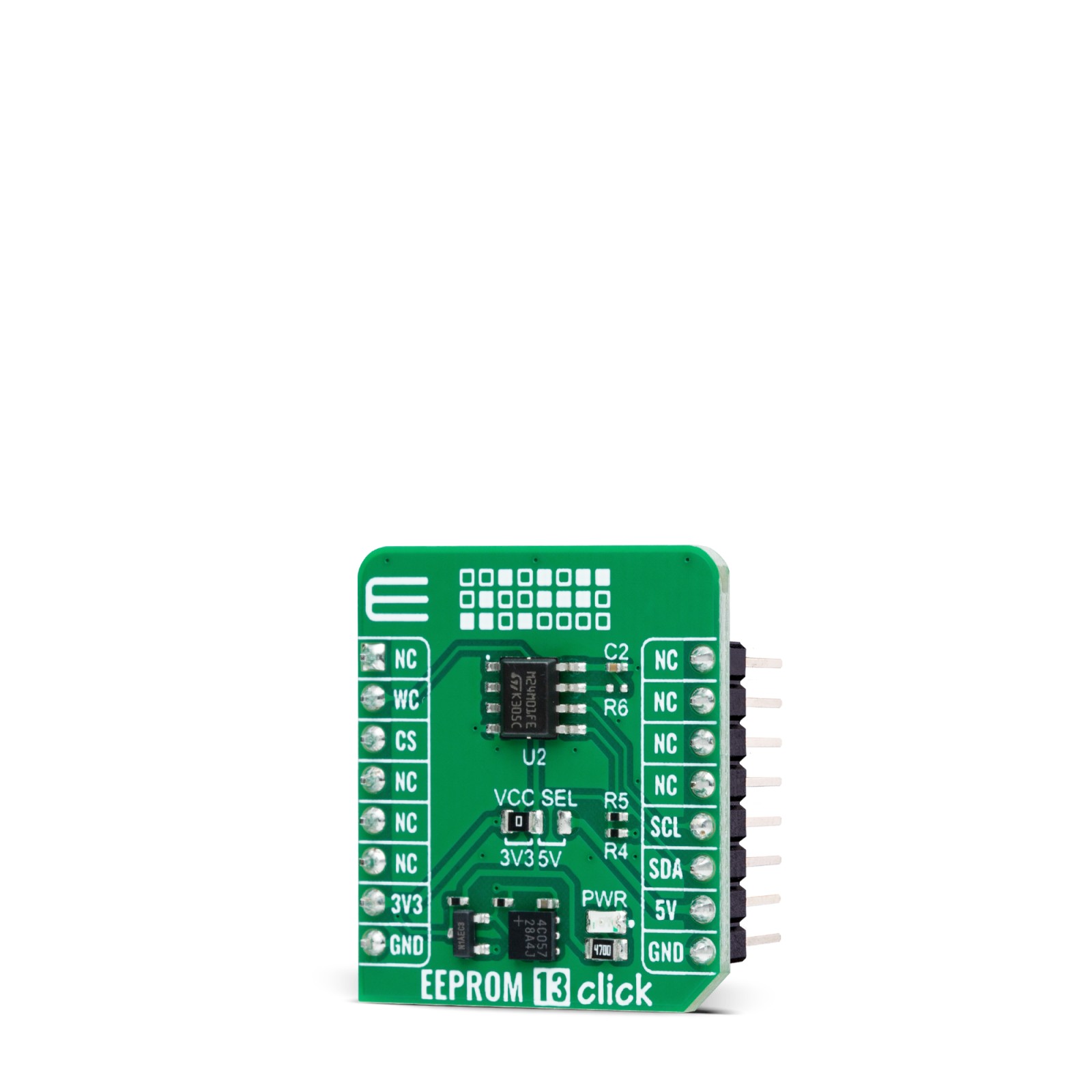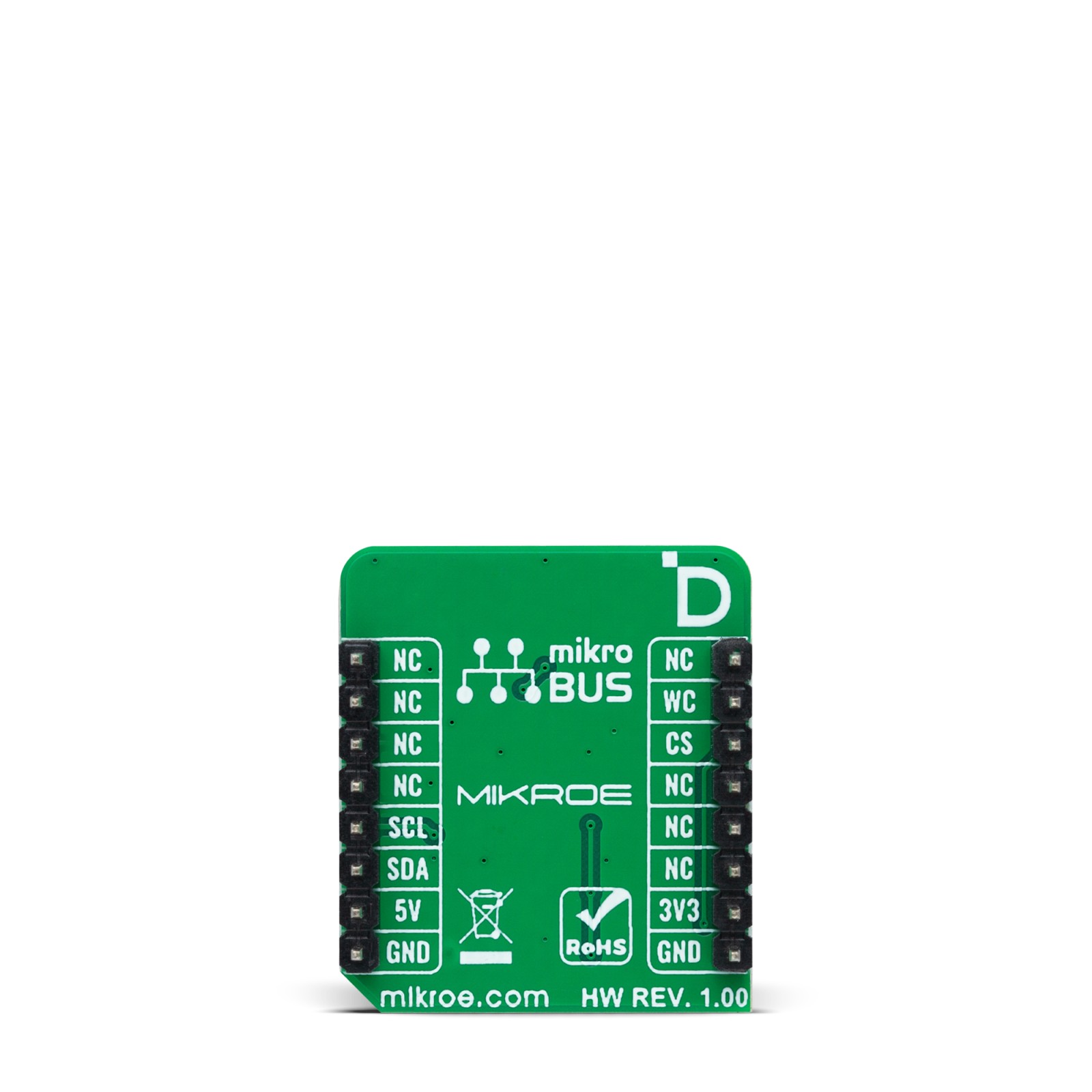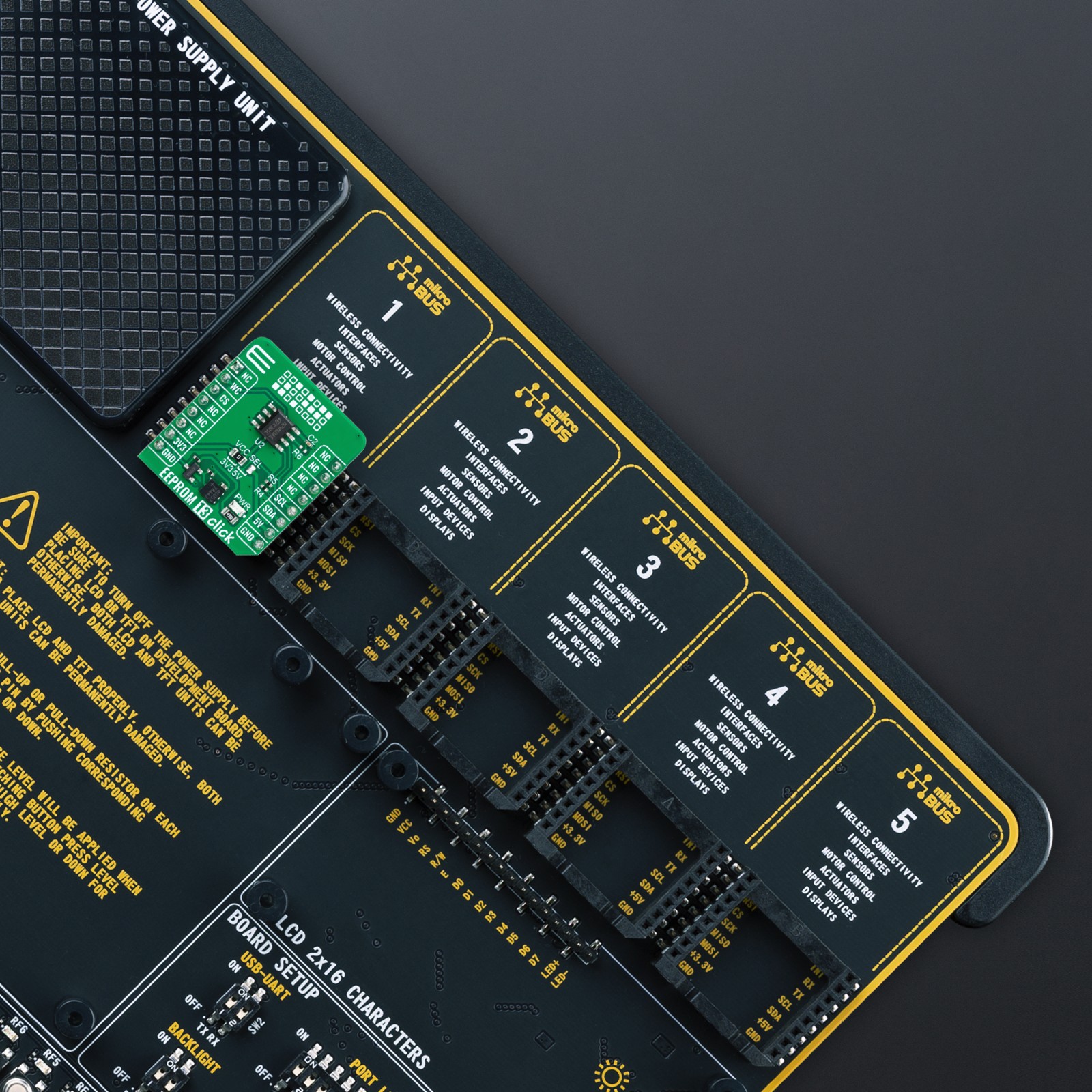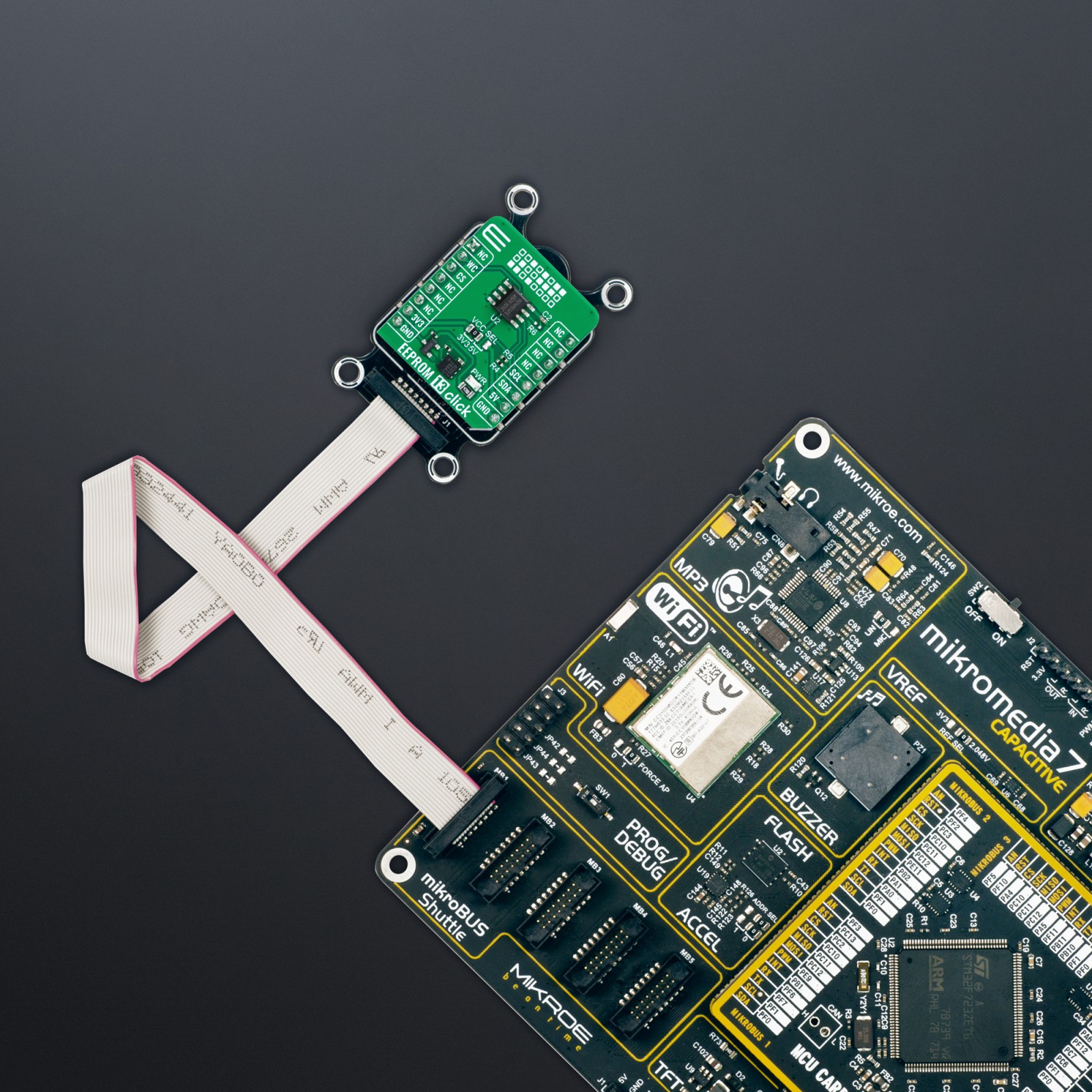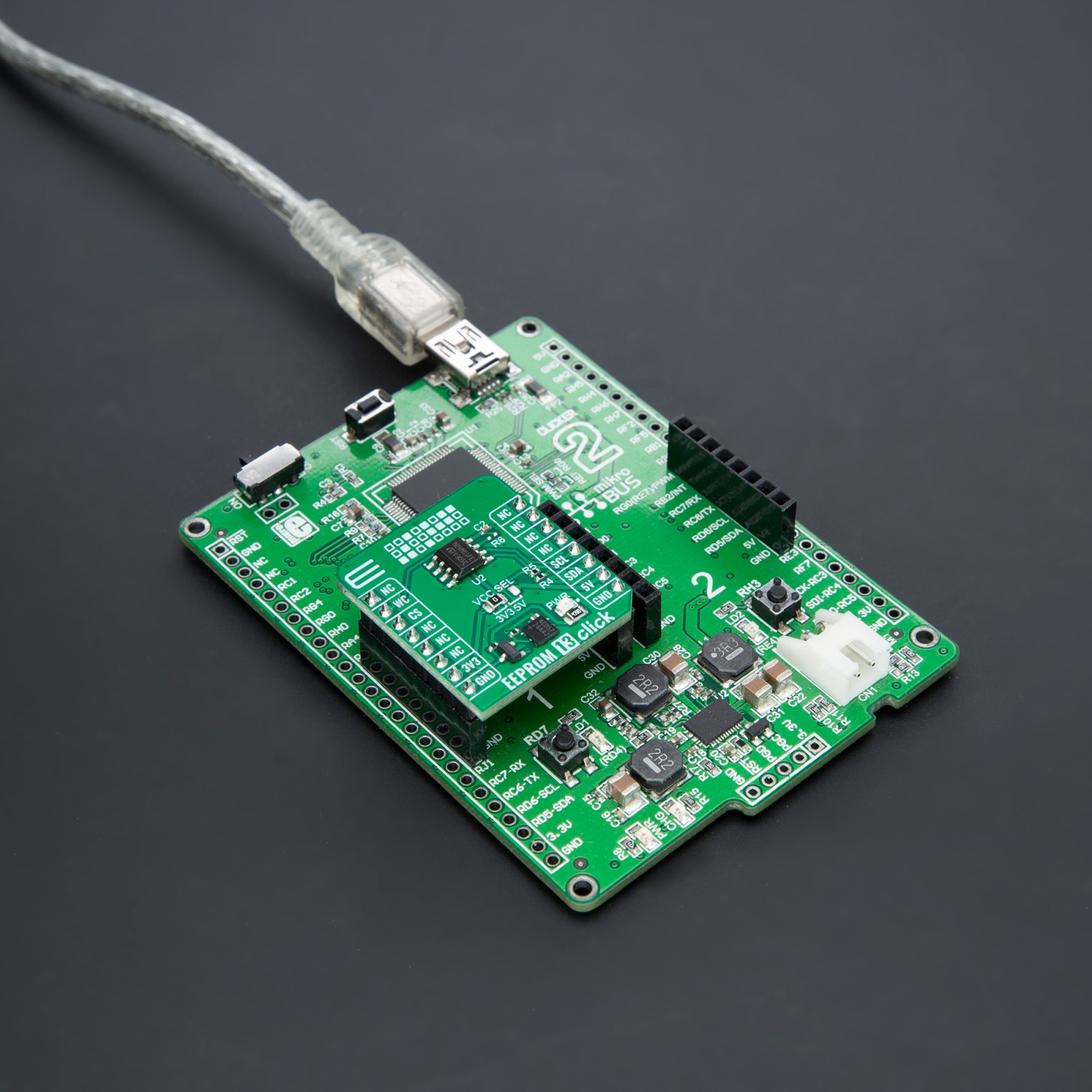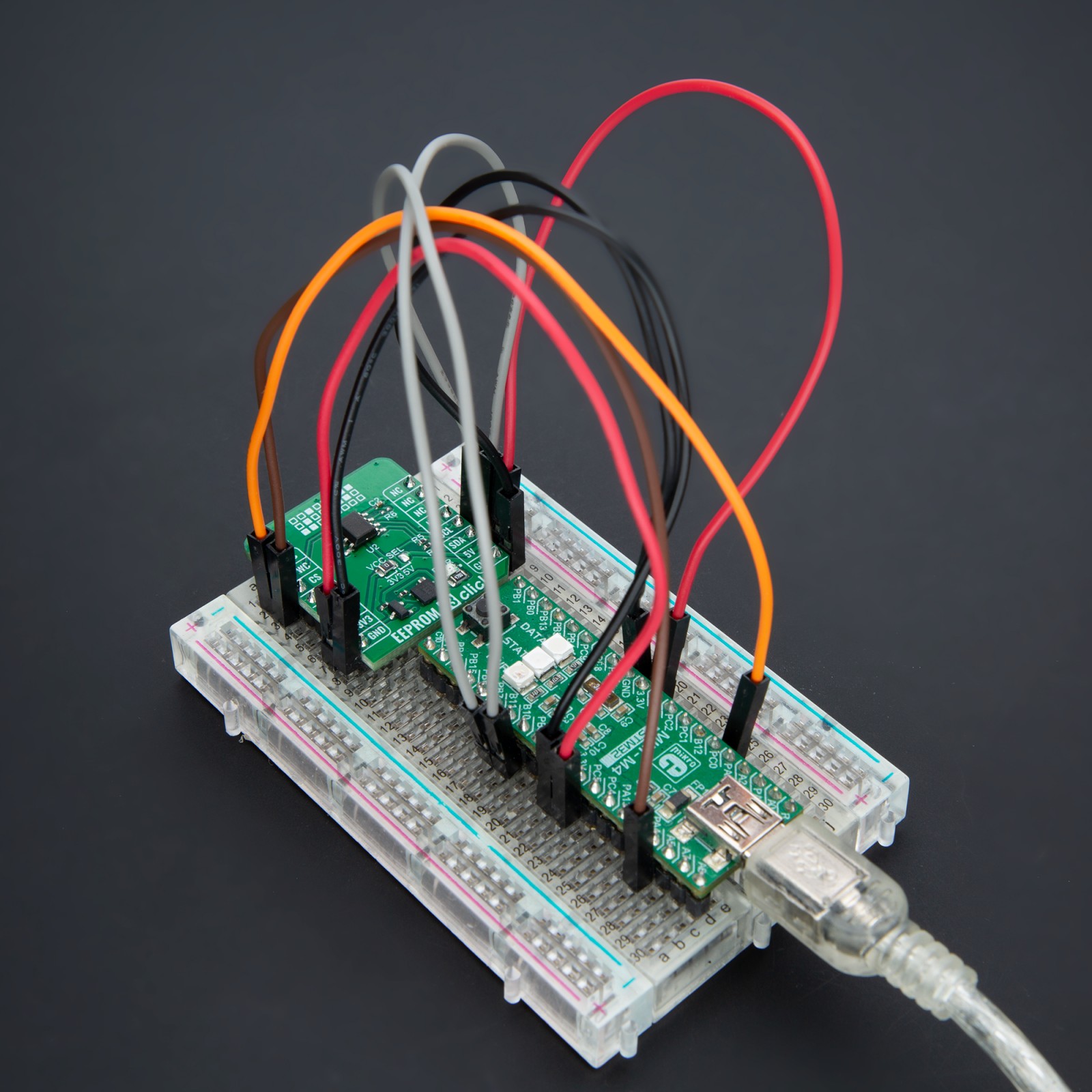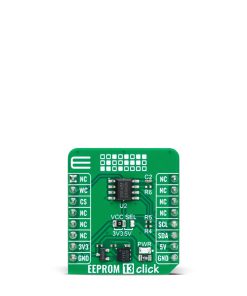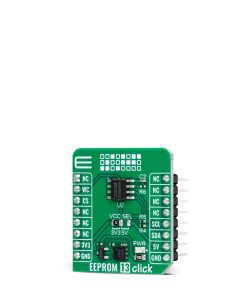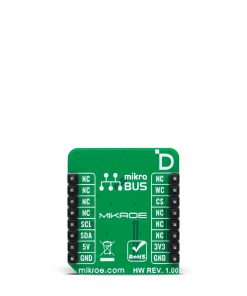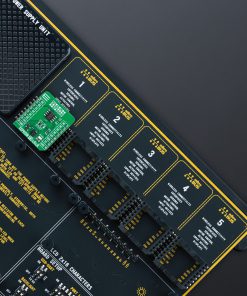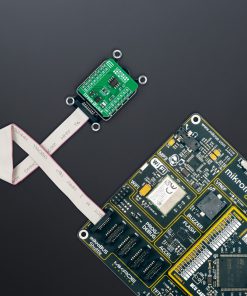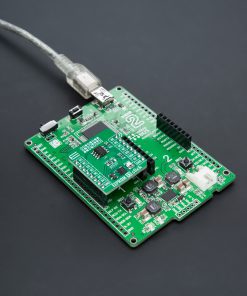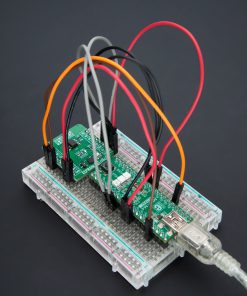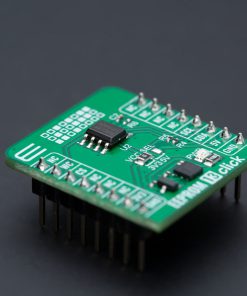EEPROM 13 Click
R205.00 ex. VAT
EEPROM 13 Click is a compact add-on board that contains a highly reliable, nonvolatile memory solution. This board features the M24M01E, an electrically erasable programmable memory with enhanced hardware write protection for entire memory from STMicroelectronics. Its memory size of 1Mbit is organized as 128K words of 8bits each, with a page size of 256 bytes and an additional 256 bytes of identification page. The identification page can be used to store sensitive application parameters, which can be (later) permanently locked in read-only mode. This Click board™ makes the perfect solution for the development of consumer and industrial applications where dependable, nonvolatile memory storage is essential.
EEPROM 13 Click is fully compatible with the mikroBUS™ socket and can be used on any host system supporting the mikroBUS™ standard. It comes with the mikroSDK open-source libraries, offering unparalleled flexibility for evaluation and customization. What sets this Click board™ apart is the groundbreaking ClickID feature, enabling your host system to seamlessly and automatically detect and identify this add-on board.
Stock: Lead-time applicable.
| 5+ | R194.75 |
| 10+ | R184.50 |
| 15+ | R174.25 |
| 20+ | R167.69 |

